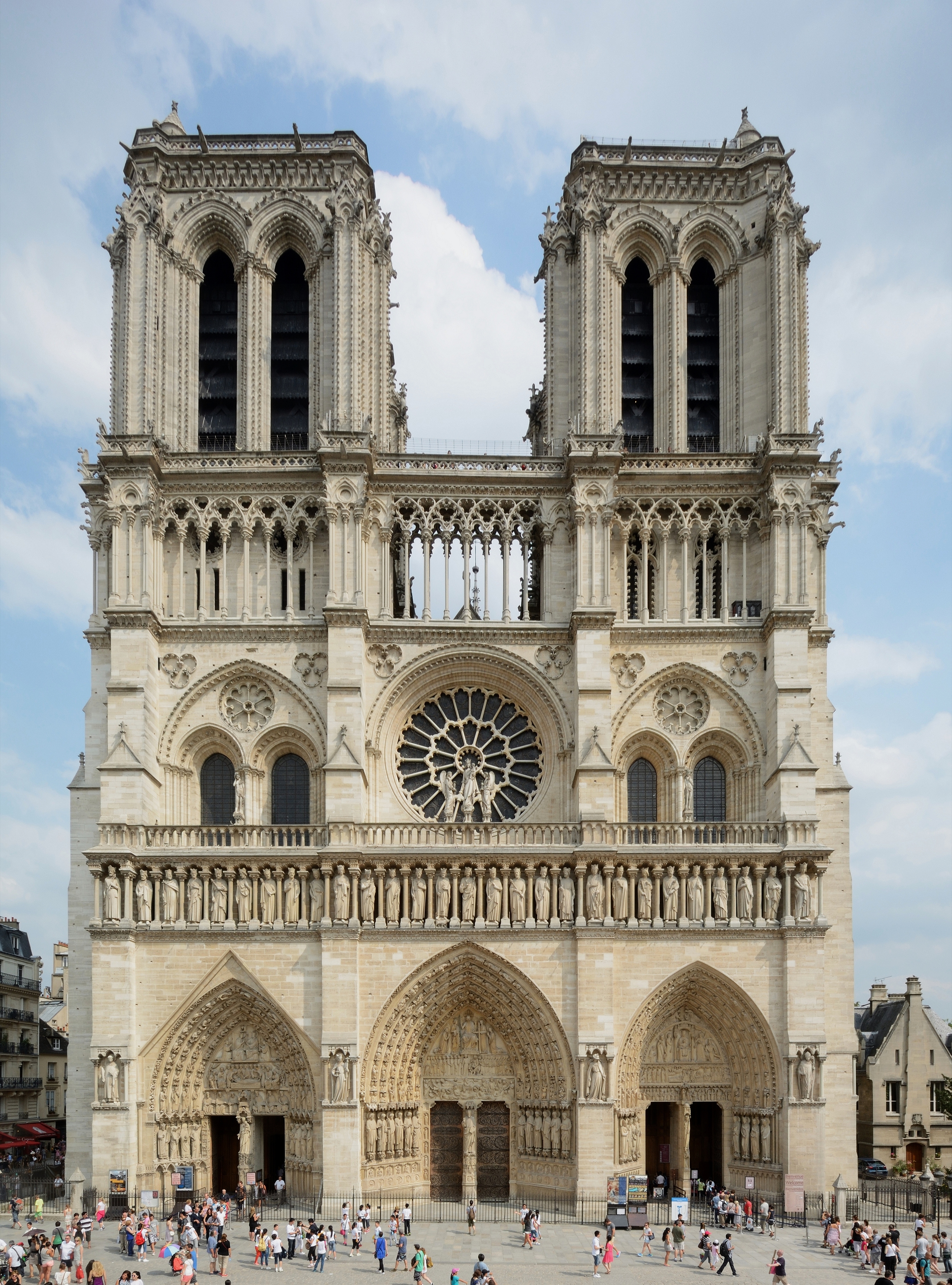A Message from the Bells of Notre-Dame Cathedral
By Amanda Saris
Anyone who has read Victor Hugo’s novel “The Hunchback of Notre Dame,” or watched Disney’s adaptation of it, will be familiar with the Notre-Dame Cathedral’s bells. The protagonist Quasimodo is a bellringer who is tasked with ringing the bells on a daily basis. This timeless story gives ts audience a glimpse of how the Notre-Dame bell towers functioned in the Middle Ages. I can only imagine what it was like to stand under the impressive shadow of the cathedral as the bells tolled, calling for afternoon prayer. What kind of messages would these bells have conveyed at the time?
.jpg) |
|
Nine newly cast bells were put on display at Notre Dame weeks before they were hoisted into the two towers in time for Easter 2013. February 23, 2013. Photo Fraser Mummery. Creative Commons Attribution 2.0 Generic license. |
Bells have been a constant in people’s lives for thousands of years. Yet their role has developed throughout time. The sound of ringing bells was once used to dispel evil spirits. Then Christian missionaries began to ring bells to attract attention while they spread the Lord’s word. This began the association of bells with Christianity and forever changed the way bells were used.
When churches began to use bells as a means of communication, they were first hung in a masonry arch over the roof, not in a bell tower like we commonly see today. Bell towers were not invented until the Early Middle Ages, starting in the 5th century. They were created in order to allow a wider range of people to hear the ringing of the bells. Once more people could hear the bells, they started to use their ringing to organize their days.
 |
|
Cathedral Notre-Dame de Paris, West view, Paris, France. July 24, 2013. Photo Peter Haas. Creative Commons Attribution-Share Alike 3.0 Unported license. |
In the Middle Ages bells would sound for joyous occasions such as feast days, or the election of a new Pope. With good news, bell ringers would swing the bells. But if there was bad news, bell ringers would strike the bells. They’d sound bells for unfortunate occasions like funerals and public execution. Bells were also used to alert citizens of emergency situations like a fire or the threat of violence. People were able to translate the meaning of the bell’s sounds based on the time of day it occurred, the number of times it rang, and how the bell was rung.
Very few original bells from the Middle Ages have survived to this day. There were two reasons why bells would not last long. First, bells would become damaged from constant use and develop cracks. If this were the case, the old bell would be melted down and recycled to make a brand-new bell to hang in its stead. Second, in times of war, bells were taken from their resting places and melted down to create weapons. During the French Revolution, the revolutionaries attempted to remove all of the bells from the Notre-Dame Cathedral. The bells were to be melted down to make cannon balls. However, one bell survived. The Emmanuel bell, casted in 1686, and weighing in at 12.8 tons. It was and still is the largest bell in the Cathedral and resides in the south tower.
 |
|
Sketch of the bourdon Emmanuel of Notre-Dame de Paris. June 1806. Image Anonymous. Creative Commons CC0 1.0 Universal Public Domain Dedication.
|
In 2013, in celebration of the Notre-Dame’s 850th anniversary, nine of the ten bells were replaced. The only one that was not replaced was the Emmanuel bell. The other bells had been cast after the French Revolution and were not the same size or shape as the original medieval bells. When these bells rang together with the Emmanuel bell, they would sound off-key. In order to achieve the same sound as those from the Middle Ages, bell casters studied the Notre-Dame archives. These archives told them how heavy the original bells were, as well as their thickness and diameter. By replicating these qualities of the bells, they were able to replicate their sound as closely as possible.
People could finally imagine what medieval Paris sounded like, in the presence of the Notre-Dame Cathedral. What must it have felt like for a commoner to witness such a magnificent sounding melody of bells? What kind of message did the bells send to people? It is quite a romanticized image. Even now, we can get lost in the melody, just for a moment.
The Notre-Dame Cathedral has continued to toll its bells through wars, fires, and pandemics alike. It has withstood the test of time. The bells will never be silenced, they demand to be heard. They will continue to awe and inspire future generations in the years to come. The melodies will surely stop people in their tracks as they have for hundreds of years.
Eleanor Beardsley. “New Bells Chime with Modern Pitch at Notre Dame Cathedral.” NPR, March 24, 2013.
Ioan Carcea, Oana Baltatescu, and Raluca-Maria Florea. “Aspects Regarding the Tradition of Bell Manufacture and Use.” Metallurgy and Materials Science, no. 1 (2012) 74-85.
Luc Rombouts. Singing Bronze A History of Carillon Music. Leuven University Press, 2014. ProQuest Ebook Central.
Dany Sandron and Andrew Tallon. Notre Dame Cathedral Nine Centuries of History. University Park: The Pennsylvania University Press, 2013. Kindle.
Comments
Post a Comment